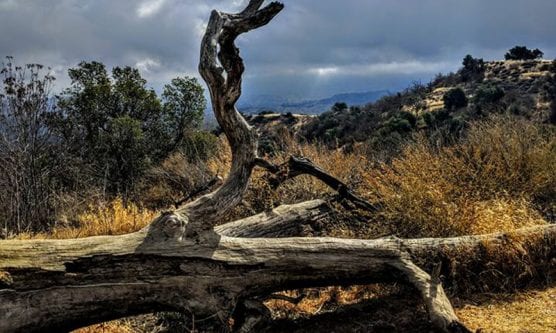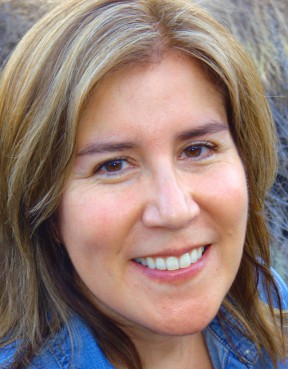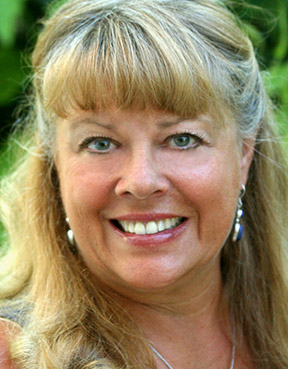 Does anyone remember the protests of the 1960s? I was too young to be a part of it, but from what I’ve seen on the History Channel, all kinds of things were done to create a voice regarding Vietnam, equality, economic disparity and the environment.
Does anyone remember the protests of the 1960s? I was too young to be a part of it, but from what I’ve seen on the History Channel, all kinds of things were done to create a voice regarding Vietnam, equality, economic disparity and the environment.
I’m proud to say – and it wasn’t even on my bucket list – that I’ve recently been banned from Tejon Ranch Conservancy. I think they consider me an activist, but I’m not quite sure.
What did I do to be added to the List of the Exiled?
If I’m going to brag about this status to my grandchildren, I should at least know what I did.
I asked the Tejon field trip scheduler, “Why?” and he frustratingly said, “I can’t tell you.”
The only way you can hike or even drive through Tejon Ranch land is to live or work there or pay $20 per visit. I’ve been paying to hike the property for 10 years with no problem. These hikes are always in groups and with Tejon Ranch Conservancy employees as escorts. In November, I organized another field trip for a group of paid hikers and was stunned to get an email the night before the trip at the eleventh hour, stating I was one of two people excluded from the very hike I planned for them.
I had to figure out what I did wrong. This is what I learned:
Tejon now forbids you on their conservation property if you belong to environmental groups including but not limited to the Sierra Club, Audubon Society, California Native Plant Society, Center for Biological Diversity, the Natural Resources Defense Council, Endangered Habitats League, and Planning and Conservation League.
This list was recited by Tejon employees just before we would begin a hike, with a verbal warning that you can’t be on the land if you’re a member.
All of these organizations are suing Tejon for a number of different violations that Tejon is not honoring from a 2008 agreement. The agreement gave $15.8 million in taxpayer dollars to allow easements to scientists and researchers. Tejon took the public funds and instead banned the very people they were supposed to allow easements.
The friends I know who are members of naturalist groups are kind of nerdy. Rather than spend free time making money, they provide data and teach future biologists and scientists – i.e., school kids. They are teachers, nature lovers, parents, grandparents and even volunteer docents at our state parks. It’s not the way to make the big bucks. It’s a way to make it better for future generations.
Being a member of one of these groups couldn’t be the reason I was banned, because I was not (yet) a member of any of them.
Tejon’s property recorded 2,000 residents in the 1850s of Kawaiisu, Kitanemuk, Yokuts, Chumash and Tataviam tribes living on their ancestral land. Families were forced off their own homes and property through four Mexican land grants. Some of the descendants still live in nearby Bakersfield.
This is not my ancestry, so it shouldn’t be Tejon’s fear that I would file for reparations.
News articles over the years have no consistency as to how many homes are to be built on this land. For clarity, it’s actually two projects: Centennial (L.A. County) with 19,333 new homes, and Tejon Mountain Village (Kern County) with 17,000 new homes, for a total of 36,333. Of the Tejon bus tours I’ve been on, our guides consistently said these homes will be built as gated communities on 1 acre of land each. No tours I’ve been on have ever mentioned any construction of low-income housing or apartments.
I live on the wrong side of the Grapevine, and when it closes, I’m stuck. This happens about 10 times a year. It also means I can’t go home or leave home when the barricades are up. There are no other back roads. The 5 Freeway is “it.” The Grapevine closes when cars or trucks turn over or crash; in mudslides, high winds, fire, snow or ice. Like a weird game of musical chairs, when it closes, the hundreds of cars and big rigs on this stretch are trapped for up to 36 hours.
I can’t imagine 75,000 more cars on “the most treacherous part of the 5 Freeway” which, according to Caltrans, “already claim(s) more than its share of casualties.”
This property sits on two major earthquake faults, the 185-mile Garlock Fault (a 7.1 happened on July 6, 2019, and produced a bulge in the land observed by satellite radar images) and the 800-mile San Andreas Fault. Fort Tejon was struck by a 7.9 from the San Andreas in 1857, the largest recorded earthquake in continental U.S. history. Geologists claim California is long overdue for it to strike again.
Where will the water come from for the 100,000 new residents of these two communities? I was told by my Tejon chaperones that the 12,000 head of cattle have priority over future homeowners. The business of growing almonds and other water hungry crops will also remain.
Tejon doesn’t worry about water for new communities because the East Branch of the California Aqueduct passes through Tejon Conservancy, and Tejon has easements to guarantee they receive water. What happens when the tides quickly turn and we’re back in extreme drought, and now have these additional water consumers vying for the same water that is needed elsewhere?
Tejon geography is similar to the Paradise Fire where 85 people died. Like Paradise, it’s placed in a high fire-hazard severity zone with wind gusts recorded as high as 90 mph. Like Paradise, there’s only one way out to Interstate 5 from these proposed new towns, should there be a disaster that residents need to flee.
This brings me no closer to learning why I was banished. Could it be Tejon Ranchers have begun to pay Facebook researchers to scan social media posts for anything “negative” about the area? Was it something I said?
I’ve read that Lennar Corporation – a Miami-based real estate company that bought Newhall Ranch in 2004 – might be funding this project. Centennial has been approved by Los Angeles County, yet construction has not begun. Is Lennar having second thoughts?
If my job was with Lennar to make money for investors in the real estate business, I know I’d reconsider.
Helen Sweany is a nature lover who would live inside the Oak of the Golden Dream if she could. She is not now and never has been a member of the Center for Biological Diversity.
Like this:
Like Loading...
Related






 Tweet This
Tweet This Facebook
Facebook Digg This
Digg This Bookmark
Bookmark Stumble
Stumble RSS
RSS








































REAL NAMES ONLY: All posters must use their real individual or business name. This applies equally to Twitter account holders who use a nickname.
4 Comments
Maybe not such a good idea to make agreements with these folks. They don’t seem to keep there promises, That’s why there was that tree sit in Stevenson Ranch – developer promise not kept. Now Tejon. I wonder how the Center for Biological Diversity, California Native Plant Society and Wishtoyo will make out. They took 15 million to settle on Newhall Ranch, Sort of strange with all the endangered species there. Now that they get this money they have agreed to submit letters saying they don’t oppose any of Fivepoint/Lennar’s projects in the SCV.
Don’t confuse the “tree sit” in Stevenson Ranch for the issues herein. They may be distantly related as in “protecting the environment” but the Tejon Ranch is a whole ‘nother thing.
Much like the Bixby Ranch properties along the California coast, these properties go back in history (whether or not you like it) and come with specific and important restrictions and grants.
As for “promises” made for these large (thousands of acres) ownership properties in California, I’m not a lawyer or licensed realtor so my only thoughts are my own.
Unless the State of California is willing to buy out the current owners (at a reasonable price) all of these lands continue to be privately owned. That prevails even if the current owners do not intend to maintain or manage the properties as other people wish them to do so.
Would it be a wonderful thing if all of the Tejon Ranch properties could be restored to their native conditions and preserved for the controlled and managed use for all of Californians? Absolutely!
But if that is what you want then you need to besiege Governor Newsome and the State Legislature to make that happen.
It’s not like we’re talking about pristine native eco-culture here; much of the property has been a working ranch for more than 120 years. Plenty of this information is available online. And don’t start me on Edward F. Beale!
I’m not pitching an argument for or against Tejon Ranch and it’s business concerns regarding development of parts of that gigantic property. That’s a lot of square miles of private property.
However, it seems to me that unless there is a groundswell of public opinion (not likely – most folks haven’t a clue what or where it is), changes will be up to the Counties involved, and the politicians affected, not to mention the landowners (corporate these days; no more Spanish Conquistador stuff)whose job it is to make a profit.
If more than 1% of Californians know who or what Tejon Ranch is I would be surprised. If 2% care whether or not the two developments were approved I would be equally surprised.
I know that we are not in the same world as California City out in the Mojave desert where a developer scammed people into buying lots of flat desert land back in the early ’60’s by promising a thriving and vibrant real estate market.
This is not that. The rules have changed enough so that is unlikely if not possible anymore. But property rights haven’t changed that much, and the right to develop a property still exists in California. It’s a lot more expensive now, and a lot more political than back then.
Back to the beginning; I would love to see the entire Tejon Ranch become a marvelous example of historic Californeo land holdings, with protected but still accessible access…within limits. Much of the agricultural property cannot be easily restored to pristine conditions. But maintaining some of it as historic (and useful) farming could be an important historic resource.
The highlands are mostly unscathed (at least so far under the current global warming scenarios) and could become a wonderful resource for those hardy enough to spend time in and traverse a wonderful part of California.
As for why Helen was booted out, I don’t know. I’ve only been on one trip through Tejon Ranch (maybe my last, I don’t know – even though I don’t belong to ANY groups) so her knowledge is greater than mine.
I would be remiss if I didn’t note that when big money is at stake, legal processes can certainly engender situations wherein nobody ends up happy: owners, users, and non-specific “stakeholders”.
I do believe that if Tejon Ranch and it’s supporters, antagonists, and all the other political aspirants cannot come together with a plan to both serve the property owners needs AND ensure access to the wonderful landscape and ecology, then all that wonderful land will be just there. Without us.
I too have been banned from visiting Tejon Ranch. I signed a petition opposing the housing projects there about 10-years ago. I totally forgot about it, but when you sign up for a tour the apparently they do a background check. Like Helen, I am not an activist and have never protested anything in my life (and yes, I am old enough to remember Vietnam.)
What I think is unfair about this situation is that the State of California paid the developers $16 million for a conservation easement which is supposed to allow some sort of public to access the property. But, the Tejon Ranch Company still owns the land, so they can choose who gets to go and who doesn’t. Apparently, they have decided that anyone who ever did anything in opposition to their projects can never have access to the land. I think this is petty. And whatever happened to free speech?
If this was truly private property I wouldn’t have a problem, but since my tax dollars were used to pay for public access to the site, I think this terrible.
What I do not get is where are the reporters when you need one. Will someone please tell us exactly how much property tax Tejon pays for those cow dung pastures? I pay $600/year for an empty 2.5 acre lot next door. $600 x 15,000 (grapevine) 20,000 (centennial) 3500 (village) = alot more than $15.8 in taxpayer dollars that Tejon is being gifted. Tejon Mountain Village was given the green light eons ago. They are using the term “tentative building lots” to put the lots on the market for a developer without paying tax on “building lots”. Everyone else who holds onto a lot and waits for a golden opportunity to sell has to pay property tax. The money they pay consultants and lawyers to prolong these environmental issues is chump change compared to what they would pay in property tax. So one could say it plays into their strategy to jerk around. They have one project up for sale and two in the down the line basket.